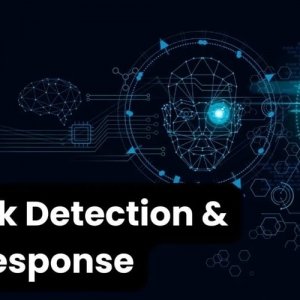In today’s threat landscape, detection alone is not enough. Proactive cybersecurity strategies like deception technology are gaining momentum as organizations seek smarter, more adaptive defenses. At the heart of deception lies a simple yet powerful idea: place enticing traps—decoys—within your network to lure, detect, and study intruders before they reach real assets.
However, the effectiveness of deception relies heavily on how and where decoys are deployed. Random placement can lead to blind spots or alert-savvy attackers. This blog explores strategic decoy placement techniques to maximize detection, reduce false positives, and gain valuable threat intelligence.
1. Understanding What a Decoy Is
Before diving into placement strategies, it's crucial to clarify what decoys are. A decoy is a fake but realistic digital asset designed to mimic legitimate IT resources. Common decoy types include:
-
Fake endpoints (workstations, servers)
-
Credentials (honeytokens)
-
Network services (SSH, RDP, SMB, FTP)
-
Applications (CRM, ERP, email)
-
Data (fake customer records, files, databases)
These assets appear genuine to attackers but are isolated from production systems and closely monitored for interaction.
2. Why Decoy Placement Matters
Improper placement can lead to:
-
Missed intrusions: If attackers never encounter a decoy, they remain undetected.
-
False positives: Poorly designed traps can be triggered by normal user activity.
-
Wasted resources: Deploying too many decoys in low-risk areas adds operational overhead.
Effective placement increases your chances of early detection, improves attacker attribution, and reduces dwell time.
3. Key Principles for Effective Decoy Placement
a. Mimic Your Environment
Decoys should blend seamlessly into your environment. Match hostname conventions, operating systems, installed software, patch levels, and network behavior.
b. Prioritize High-Value Targets
Place decoys near critical assets (e.g., databases, domain controllers, financial systems) to detect lateral movement and privilege escalation attempts.
c. Cover Common Attack Paths
Use threat modeling and past incident analysis to map typical adversary movement. Place decoys at key junctions such as:
-
DMZ zones
-
Internal network segments
-
Remote access points
-
Cloud infrastructure
-
VPN and Wi-Fi networks
d. Use a Layered Approach
Don't rely on a single type of decoy. Combine endpoint decoys, credential lures, fake file shares, and honey APIs for a multi-dimensional trap strategy.
e. Balance Visibility and Realism
Decoys must be visible to attackers during reconnaissance but not so obvious that they seem suspicious. Techniques include:
-
Advertising decoys in ARP/NBNS/DNS responses
-
Embedding fake credentials in configuration files
-
Registering decoy assets in AD and DNS
-
Simulating user activity or traffic on decoy systems
4. Network Segmentation and Decoy Placement
Use your network segmentation strategy to inform where to place decoys:
| Network Zone | Suggested Decoys |
|---|---|
| Perimeter / DMZ | Web server decoys, fake APIs, honeypots |
| Internal LAN | File servers, database decoys, workstations |
| Executive VLANs | High-value endpoint decoys with lures |
| OT/ICS environments | PLC/MODBUS/SCADA simulators |
| Cloud environments | Decoy instances, buckets, serverless apps |
| Remote user subnets | Fake VPN credentials, endpoint decoys |
5. Deploying Credential-Based Decoys (Honeytokens)
Credential decoys are low-cost and high-impact. Embed honeytokens in places attackers commonly harvest from, such as:
-
Configuration files (e.g.,
.env,.bashrc) -
Cached browser credentials
-
Email inboxes
-
Cloud metadata services
-
Fake password managers or vault entries
Monitor for any usage of these credentials to catch unauthorized activity immediately.
6. Automation and Orchestration
Use cyber deception platforms or SOAR integrations to automate decoy deployment and response:
-
Dynamically deploy decoys based on asset risk scores
-
Rotate decoy metadata to avoid detection
-
Trigger alerts or playbooks when decoys are accessed
-
Integrate with SIEM and XDR for broader visibility
Automation helps scale deception across large, dynamic environments like hybrid clouds or multi-tenant networks.
7. Monitoring and Maintenance
Deception is not “set and forget.” Continual monitoring and updating are key:
-
Periodically test decoys to ensure accessibility and stealth
-
Rotate decoy identities and content to evade attacker fingerprinting
-
Analyze logs and attacker behavior to improve placement
-
Tune alert thresholds to avoid false positives
8. Common Mistakes to Avoid
-
Overexposing decoys: Excessive advertising can tip off attackers.
-
Making decoys too obvious: Inconsistencies in OS versions or configurations can break the illusion.
-
Neglecting insider threat vectors: Don’t overlook internal users—place decoys in internal shares and systems.
-
Failing to align with threat models: Blindly placing decoys without understanding your attack surface reduces value.
9. Measuring Decoy Effectiveness
Evaluate decoy deployment using metrics such as:
-
Number of unique interactions with decoys
-
Time to detection (compared to other security controls)
-
False positive rate
-
Number of unique TTPs captured
-
Dwell time reduction
Use these KPIs to justify ROI and improve deployment strategies.
Conclusion
Placing decoys effectively across your network is both an art and a science. By aligning decoy deployment with your threat model, prioritizing high-value areas, using a layered approach, and integrating with detection systems, you can turn your network into a hostile and confusing space for attackers.
Deception doesn’t replace traditional defenses—it amplifies them. With the right placement strategy, you transform your network from a passive defense into an active detection engine that alerts you to threats before they cause damage.









